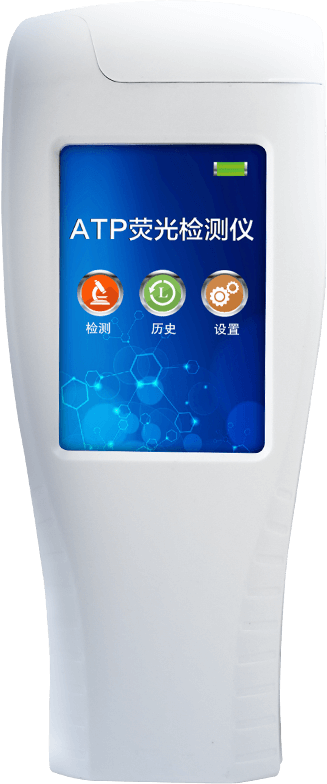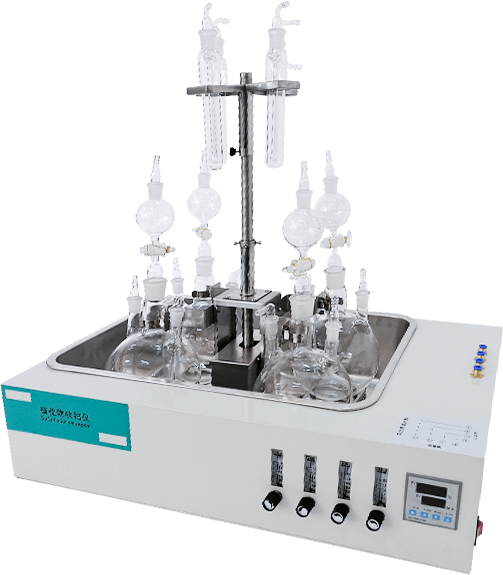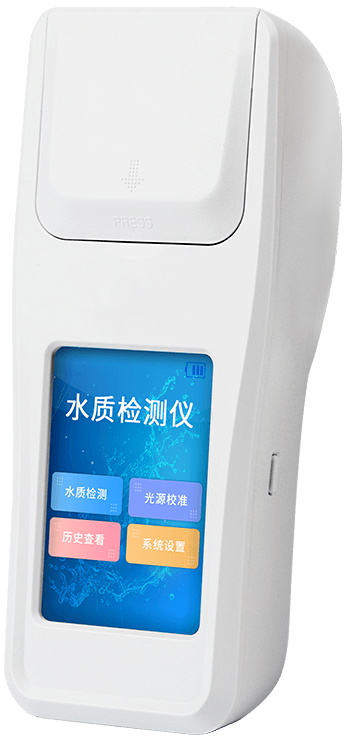
Water Microorganism Testing Instrument
- Product Number:LD-ATP
- Product Difference:Can quickly detect the content of microorganisms and bacteria in various water qualities
Product Introduction
Waterborne Microbial Detection Instrument This instrument can rapidly detect microbial and bacterial content in various water qualities. The device is a newly upgraded product featuring a large touchscreen display, replacing traditional buttons.
The operation employs a biochemical reaction method to detect ATP content. The ATP fluorescence detector is based on the firefly luminescence principle, utilizing the “luciferase-luciferin system” to rapidly detect adenosine triphosphate (ATP). ATP swabs contain reagents that can lyse cell membranes, releasing ATP from within cells. This ATP reacts with specific enzymes in the reagent to produce light, which is then detected by a fluorescence photometer. The number of microorganisms is directly proportional to the light intensity. Since all living cells contain a constant amount of ATP, ATP levels clearly indicate the presence of microorganisms and other biological residues in a sample, enabling assessment of hygiene conditions.
Conventional culture methods require operation by trained technical personnel in a laboratory, whereas ATP rapid cleanliness testing is extremely simple to perform, requiring only basic training for general staff to conduct on-site operations.
Microbial detection instruments for water have a wide range of applications, including food, pharmaceuticals, healthcare, cosmetics, papermaking, industrial water treatment, and environmental protection industries.
Product Features
Practicality: Upper and lower limit values can be set according to environmental detection requirements, enabling rapid data assessment and early warning, as well as quick screening of surface cleanliness.
High interactivity: Android high-sensitivity touch operation, high-speed data processing chip, faster operation speed, and stronger stability.
Uses rechargeable lithium batteries, eliminating the need for battery replacement.
Fast speed: Conventional culture methods take 18–24 hours or more, while ATP testing only takes a few seconds.
Equipped with a miniUSB interface to upload results to a PC, and comes with dedicated software to drive a USB drive instead of traditional CDs.
Better user experience: The test tube sleeves feature a flexible plug-and-play design, allowing for regular cleaning and long-term use, thereby extending the instrument's lifespan.
Feasibility: There is a clear correlation between microbial quantity and ATP content within microorganisms. By measuring ATP levels, the microbial quantity in the reaction can be indirectly determined.
Operability: Traditional culture methods require operation by trained technical personnel in a laboratory; ATP rapid cleanliness testing is extremely simple to operate, requiring only basic training for general staff to perform on-site.
High sensitivity: 10-15 to 10-18 mol.
30-second self-check upon startup, with an internal self-calibrating light source.
Upper and lower limit values can be set arbitrarily.
Automatically determines pass or fail.
Product parameters
| Display | 3.5-inch high-precision graphic touchscreen |
| Processor | 32-bit high-speed data processing chip |
| Testing time | 15 seconds |
| Detection interference | ±5% or ±5 RLUs |
| Operating temperature range | 5°C to 40°C |
| Operating humidity range | 20–85% |
| ATP recovery rate | 90–110% |
| Detection mode | RLU, E. coli screening |
| Standby status (20°C) | 6 months |

 +86 19353291814
+86 19353291814
 +86 19353291814
+86 19353291814



